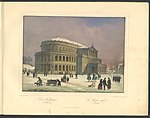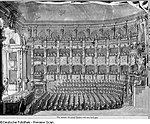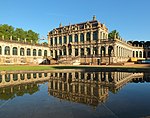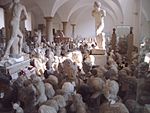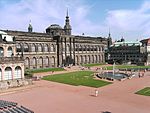Landtag of Saxony
Politics of SaxonyState legislatures of Germany

The Landtag of Saxony (German: Sächsischer Landtag, Saxon Landtag), also known in English as the Saxon State Parliament, is the legislature of the Free State of Saxony, one of Germany's sixteen states. It is responsible for legislation, control of the government, and electing some state officials. The Landtag has existed in various forms since 1831, but the current body was established during German reunification in 1990. The Landtag is directly elected and has a term of five years.
Excerpt from the Wikipedia article Landtag of Saxony (License: CC BY-SA 3.0, Authors, Images).Landtag of Saxony
Bernhard-von-Lindenau-Platz, Dresden Innere Altstadt (Altstadt)
Geographical coordinates (GPS) Address Website Nearby Places Show on map
Geographical coordinates (GPS)
| Latitude | Longitude |
|---|---|
| N 51.056666666667 ° | E 13.733055555556 ° |
Address
Sächsischer Landtag - Sakski krajny sejm
Bernhard-von-Lindenau-Platz 1
01067 Dresden, Innere Altstadt (Altstadt)
Saxony, Germany
Open on Google Maps

